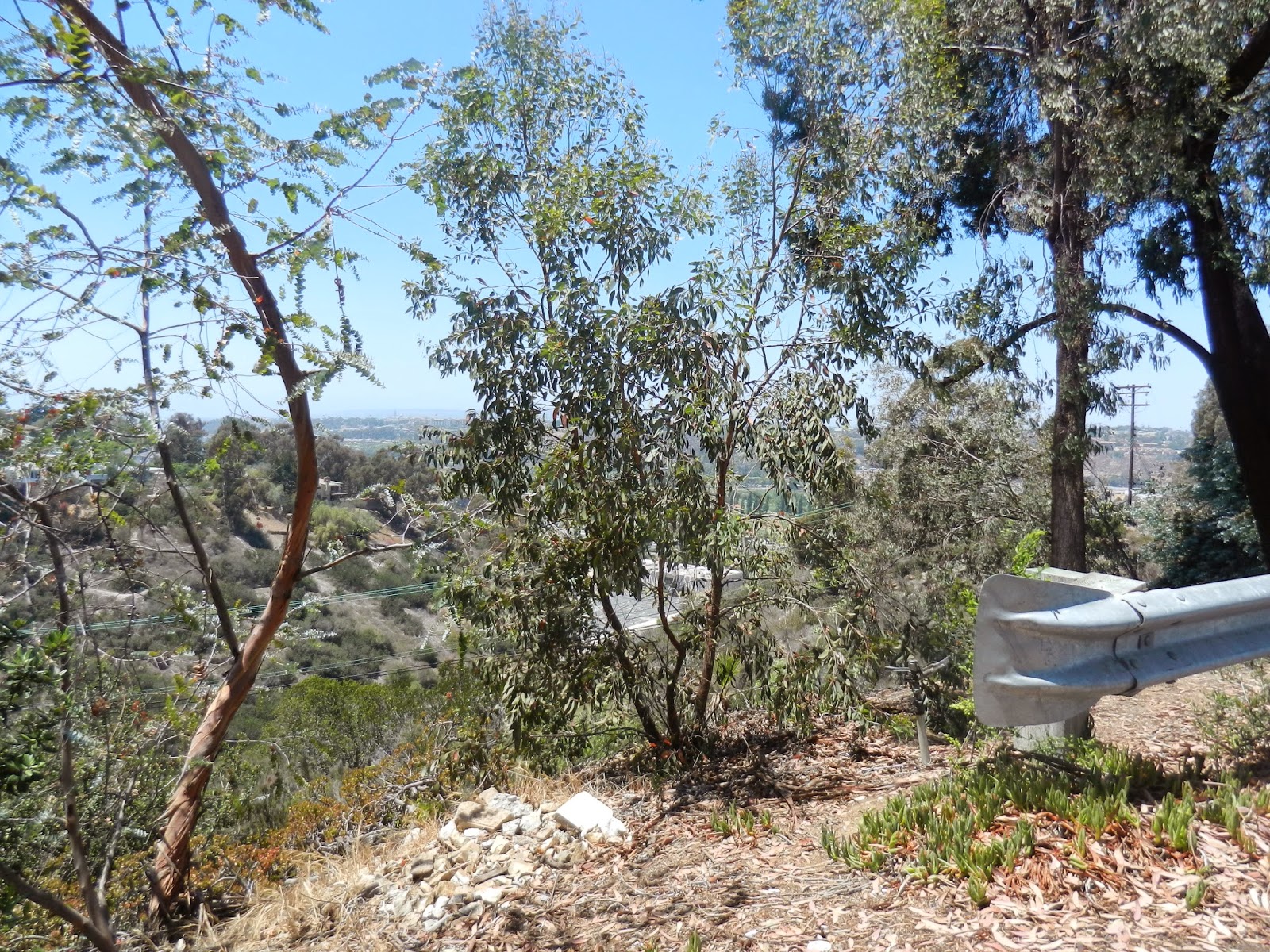Behind the UCSD Hospital and
A small construction site within a short walking distance of the hospital
As stated in my previous post, what is most interesting to me are the amounts of nature and human sounds that are present in the neighborhood. This observation may not be unique and other neighborhoods might also share this trait. I have found that there is a constant stream of natural sounds underlying the sounds of human activity. The soundscape I am describing is neither a high trafficked, condensed urban area or a rural/suburban residential area that is surrounded by quietness. The soundscape is somewhere in between. Sometimes it is hard to hear birds, crickets, dogs, and trees creaking, but they are present along with bus engines, car alarms, and helicopter propellers.
However, there are times when the soundscape is so quiet that it is unnerving. The usual sirens, buses, helicopters, etc. are not heavily present in this recording:
Divisions:
Nature v. Human
Much soundscape literature describes a division between sounds of nature and sounds of human activity. According to Bernie Krause, the soundscape is comprised of three active acoustic sources, biophony, geophony, and anthrophony. The sounds of living organisms are biophony; landscape sounds (running water and trees rustling) are geophony, and human activity (construction and moving vehicles), which are called anthrophony. These acoustic sources can sometimes be independent of one another, or combine in various combinations. Most of my recordings contain biophony and anthrophony, but some of the soundwalking recordings especially by the canyon behind the hospital contain geophony. I will not use this terminology throughout the blog, but instead cite it as an example of how there are different types of natural and human sound.
Lo-fi v. Hi-fi and Reactions to Sound
Murray Schafer describes two distinct soundscapes created by the environment, which are hi-fi and lo-fi. A rural landscape contains more hi-fi fequencies because more discrete sounds can be heard since there is little background noise. Conversely, lo-fi soundscapes are characteristic of an urban or city soundscape. Every sound is close and compact because there are too many sounds, and you can only clearly hear close encounters.
In Tim Beatley's article
Celebrating the Natural Soundscapes of Cities, he suggests that we "often tend to emphasize those sounds that are negative or dangerous or unpleasant, but we rarely work to understand what the important positive and therapeutic sounds are in our communities." As I began recording my neighborhood from my apartment and through soundwalks, I began to notice the subtleties of the natural sounds around me. The sounds I associated as negative (construction, ambulances, car traffic, etc.) still remained, but were not necessarily my focus of attention. Furthermore, Beatley says that non-human inhabitants can sometimes adapt to urban noise better than we can, as
grasshoppers have adjusted the frequency of their calls and response. Also,
sparrows have modified their songs in response to urban traffic noise. In some of my recordings, birds and crickets have kept making noise, while the ambulance sirens and loud construction remains a constant distraction for me. Of course, I do not know if their chatter is from fear or adaptation, but the presence of their sound warrants some mention.
The last interesting point from Beatley was that air conditioning is one reason why Americans have physical barriers (windows) to hearing the outside world. In this argument, I believe he is discussing neighborhoods that are not necessarily in dense urban areas. Beatley argues that keeping the windows open can at least create the "conditions for closer contact with the outside world." One can feel the natural breezes, smell the outside, and hear the neighborhood. Although this is a more intuitive claim, I can relate to the fact that I now live in a warmer climate and my apartment does not have air conditioning. As a result, I have to keep my windows open for fresh air and cool breeze. This also may be one reason why I have been extra sensitive to the sounds that occur outside.
The presence of both natural and human sounds is an important aspect of my investigation into the neighborhood soundscape. Although, I will focus on the intensity of hospital traffic (sirens, helicopters, buses, cars), there will be brief explorations into the surrounding natural sounds.
Here is a list of a few sounds I have recently heard and recorded:
Nature Sounds:
Human Activity:
- Construction (saw, drill, jackhammer, hammer)
- Cars, motorcycles, buses at the four-way stop
- Neighbors talking, eating, watching tv
- Cars coming in and out of the garage below the apartment
- The clanging of the garage door opening below the apartment
- Ambulance sirens and emergency vehicles
- Helicopter (air lifts from hospital and police helicopters)
- Fireworks in the distance
- Not quite Lo-fi soundscape
Beatley, Tim. “Celebrating the Natural Soundscapes of
Cities.” Last modified January 13, 2013.
Krause, Bernie. "Anatomy of the Soundscape," Journal of the Audio Engineering Society (2008): 73-80.
Schafer, R. Murray. The
Soundscape: Our Sonic Environment and the Tuning of the World. Rochester:
Destiny Books, 1977.










